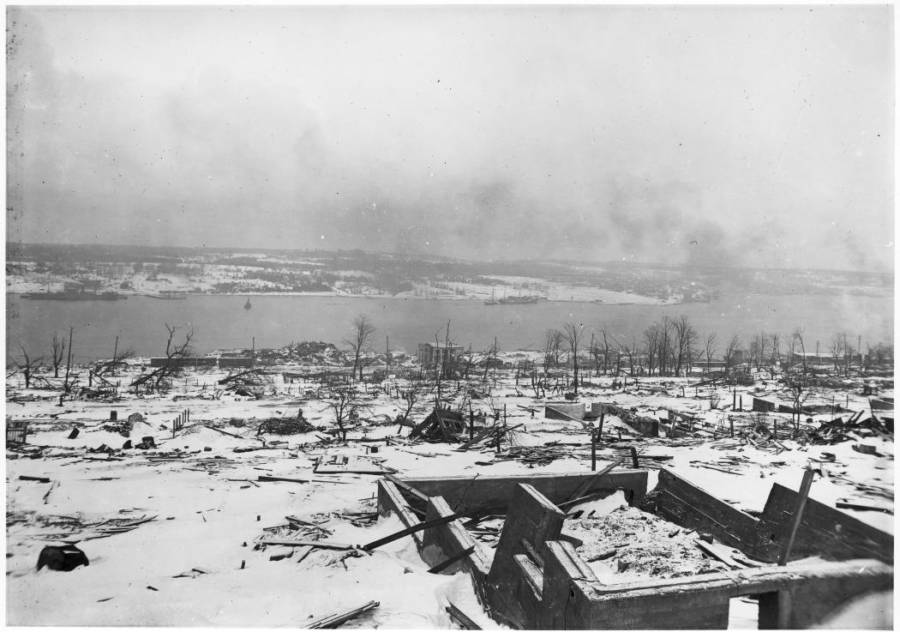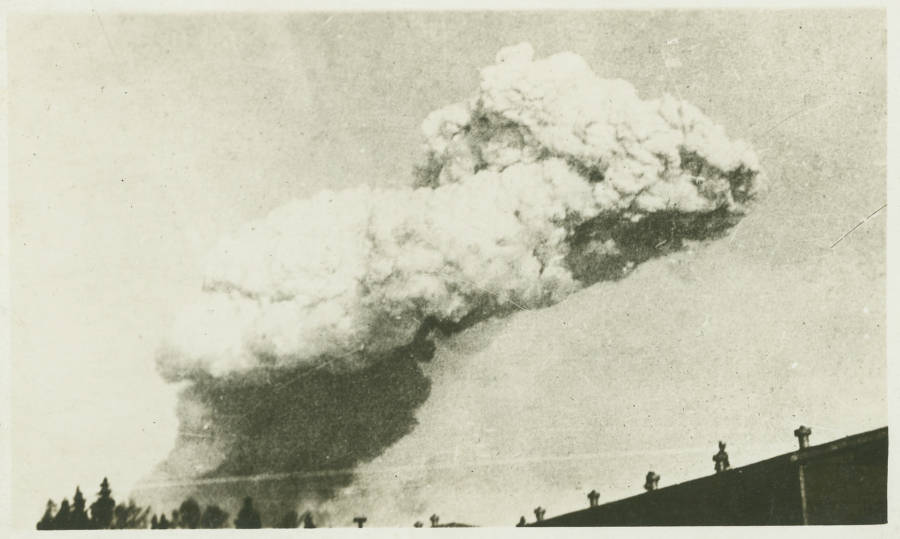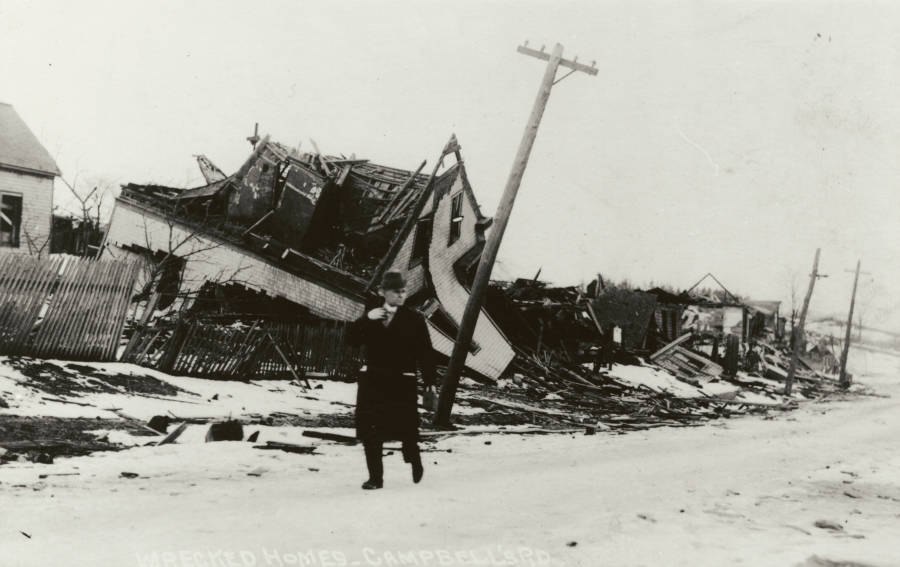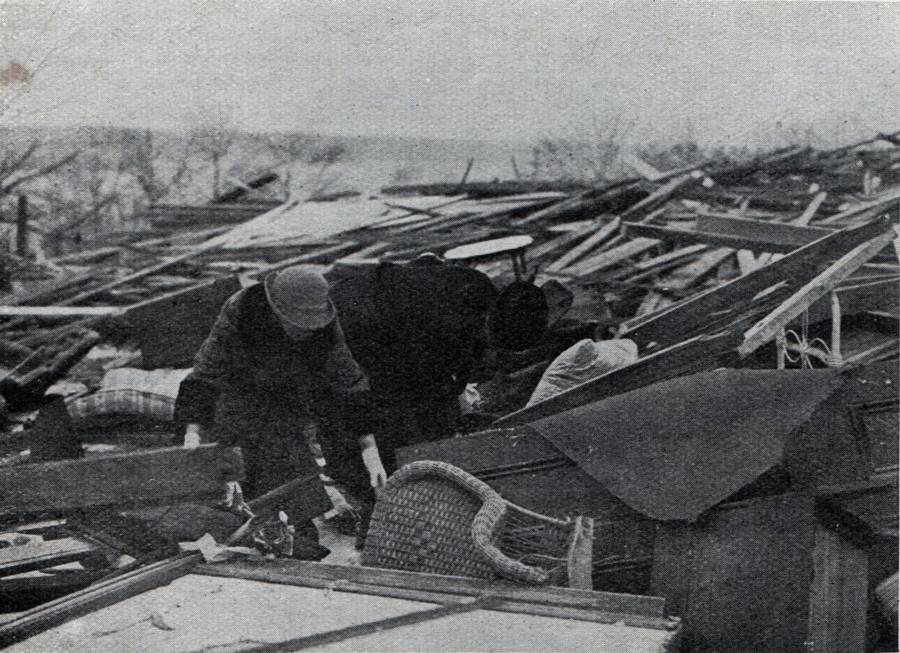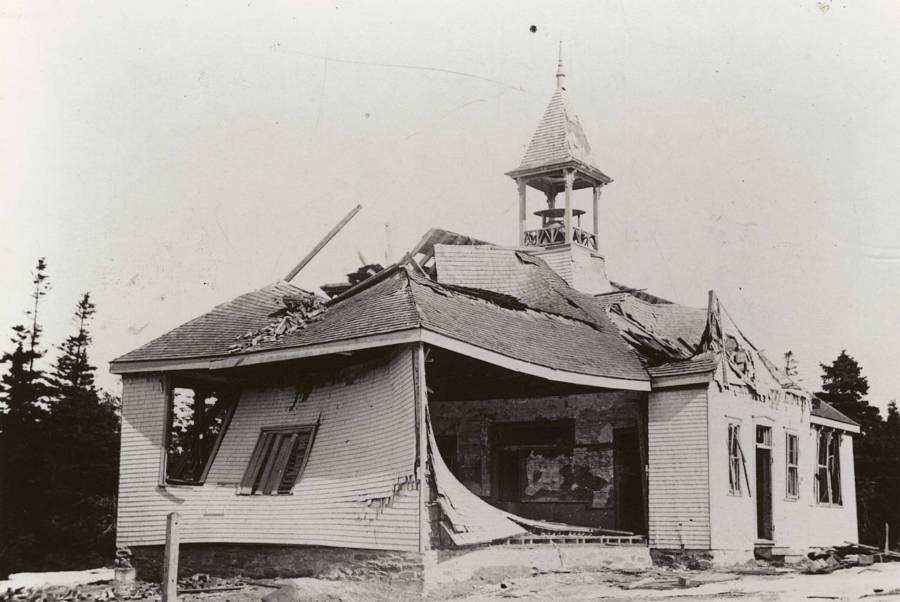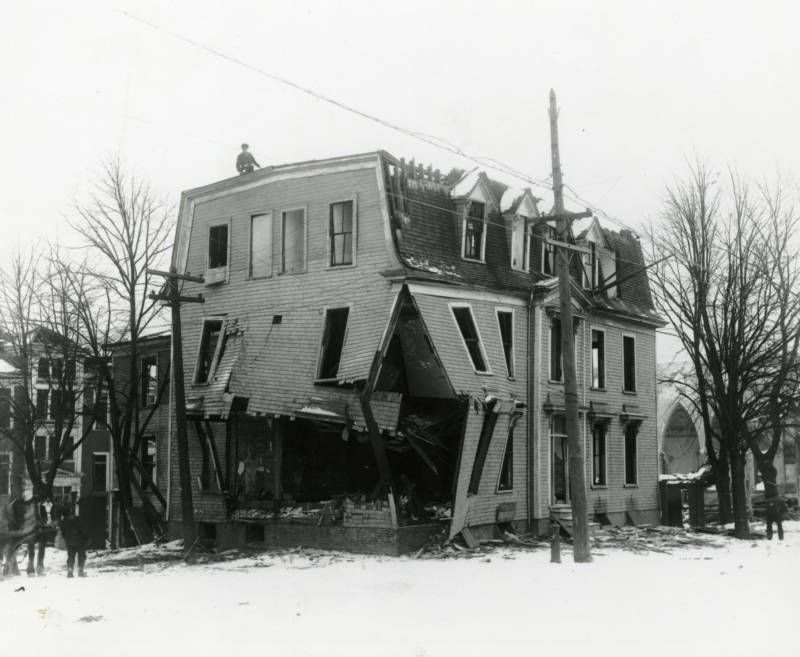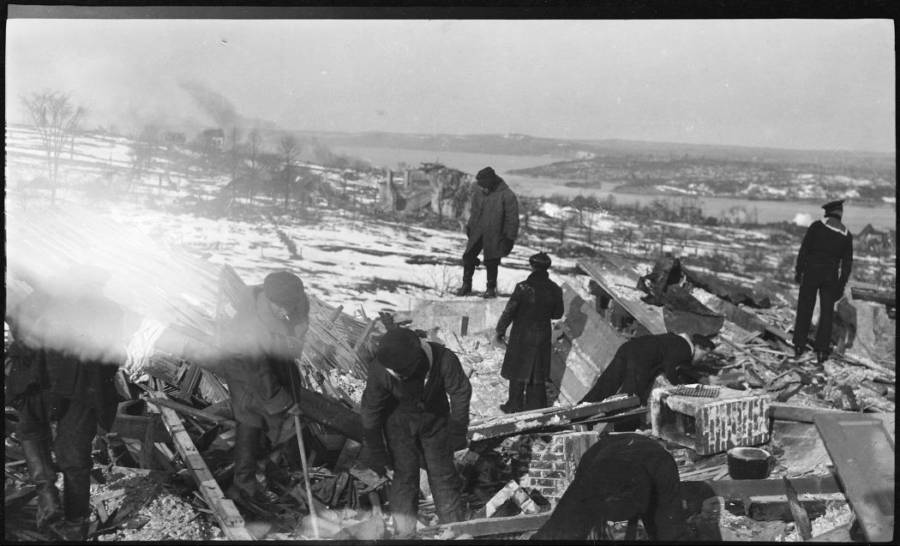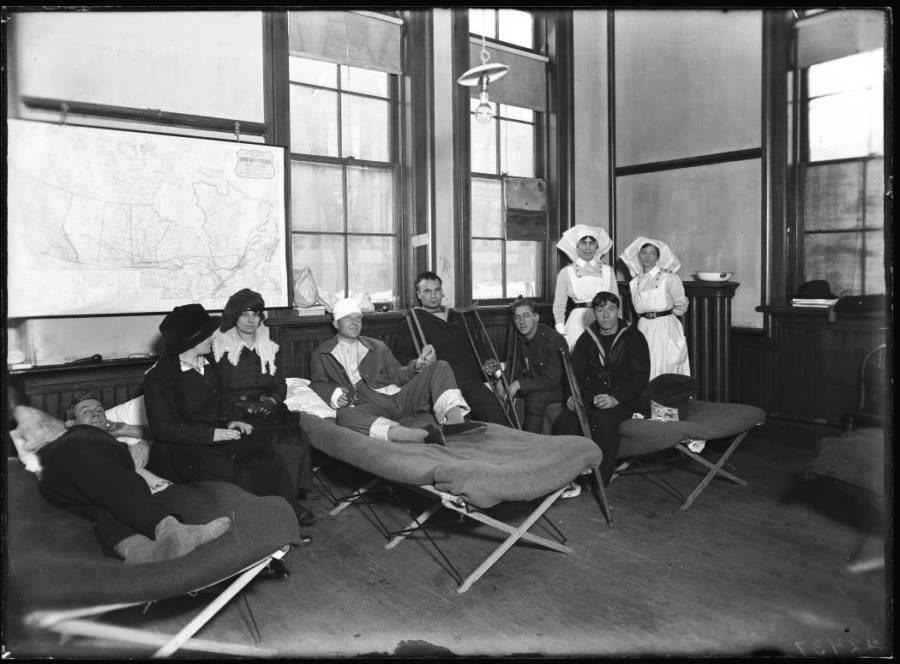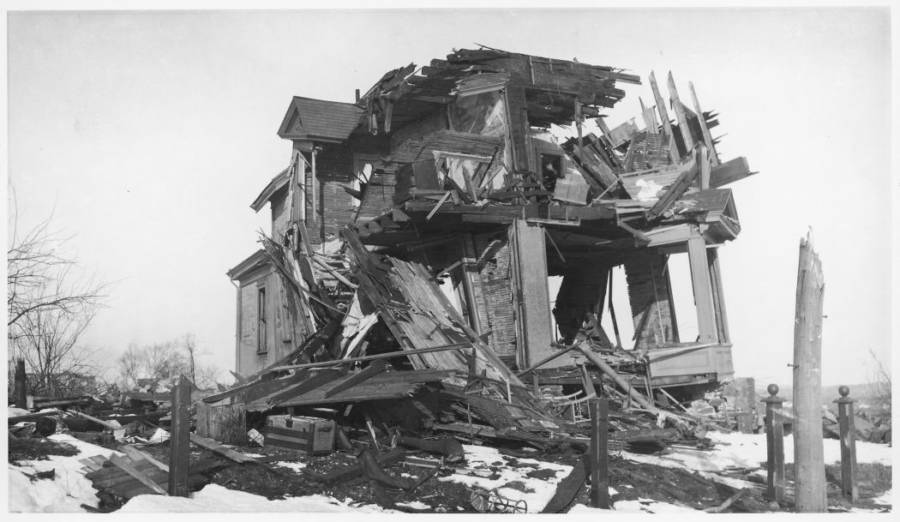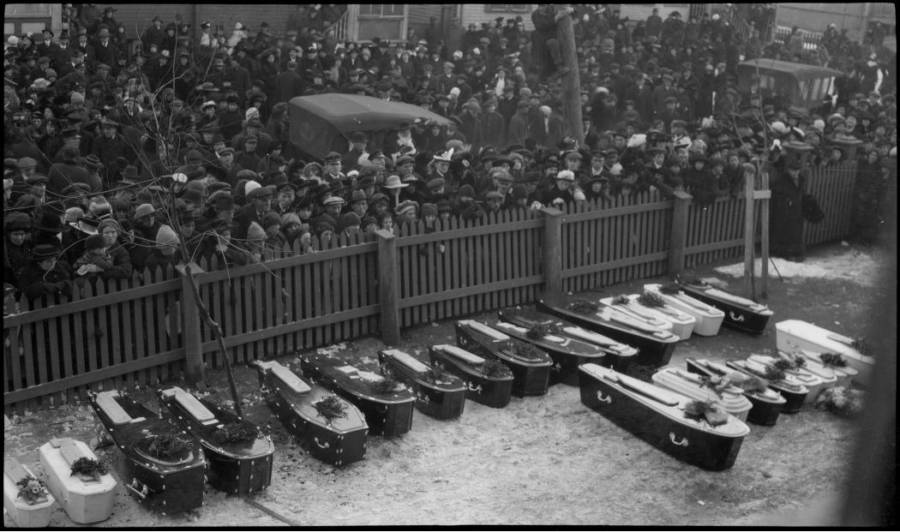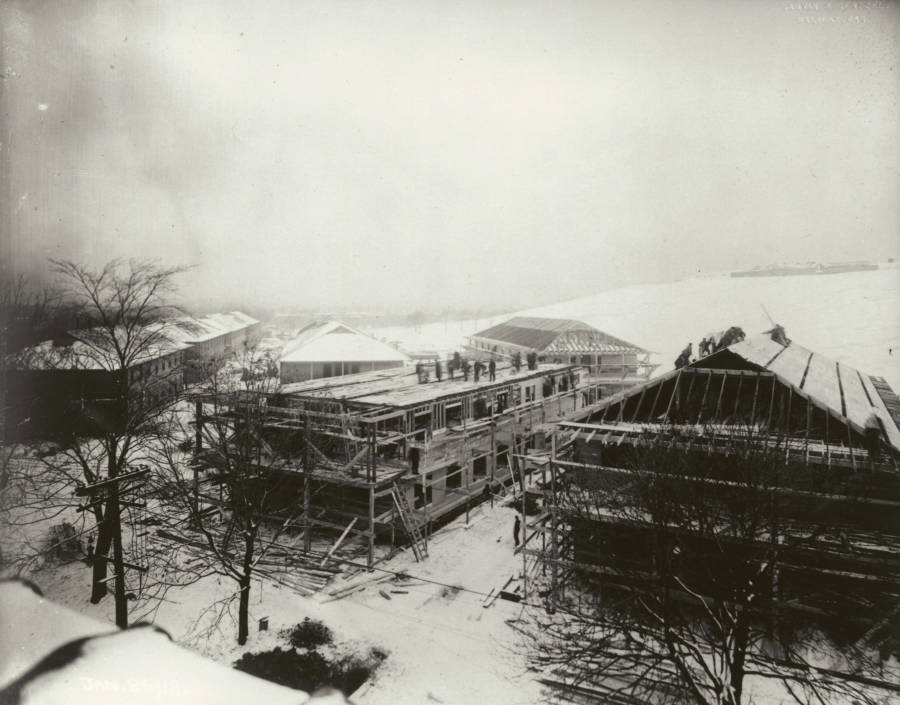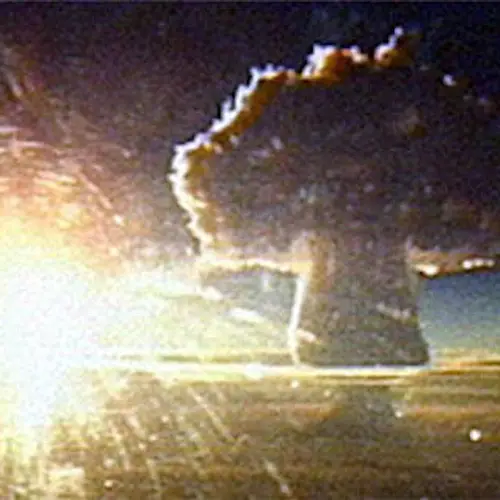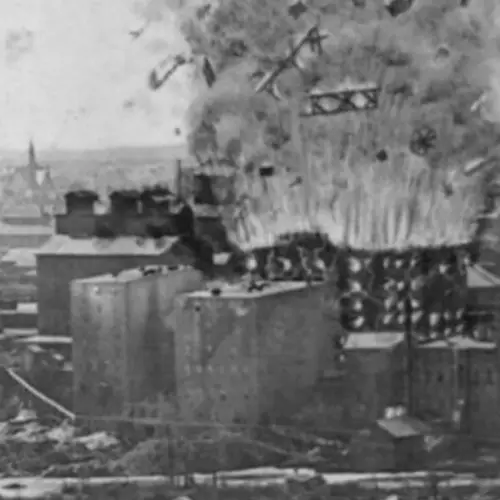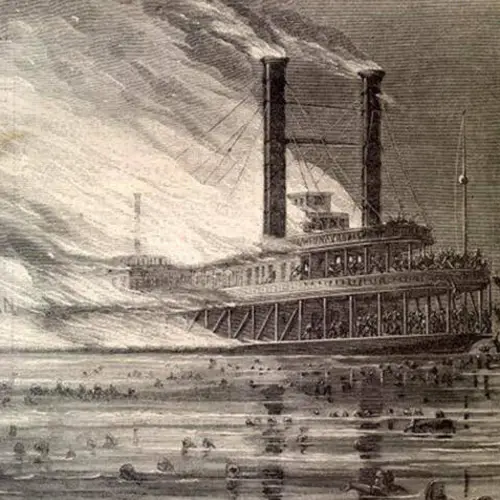On December 6, 1917, two ships collided in Nova Scotia's Halifax harbor — triggering a devastating explosion and tsunami that killed 1,800 people.
"Hold up the train. Ammunition ship afire in harbor making for Pier 6 and will explode." These were the last words of Vince Coleman, a train dispatcher who met his end during the Halifax Explosion.
At the time the disaster occured on Dec. 6, 1917, Halifax, Nova Scotia, was a bustling port town and a key departure point for convoys heading to Europe during World War I. That morning, the French cargo ship SS Mont-Blanc, heavily laden with explosives — including TNT, picric acid, and benzol — was navigating the harbor to join a convoy. At the same time, the Norwegian vessel SS Imo was departing the harbor en route to New York.
Due to a series of miscommunications as the two ships passed each other, however, the two SS Mont-Blanc and the SS Imo collided, causing benzol barrels on Mont-Blanc's deck to topple and leak, which ignited a fire that quickly engulfed the ship. The crew, recognizing the imminent danger, fled. Now unmanned, the Mont-Blanc drifted toward the Halifax shoreline.
Meanwhile, a crowd had gathered to look at the fire in the harbor. They were sitting ducks when, twenty minutes later, the Mont-Blanc exploded with a force equivalent to roughly 2.9 kilotons of TNT. The Halifax explosion obliterated the north end of Halifax, snapping trees, demolishing buildings, killing more than 1,600 people, and injuring around 9,000 others.
It was the largest and most devastating man-made explosion in history — until the invention of the nuclear bomb.
Halifax During World War I
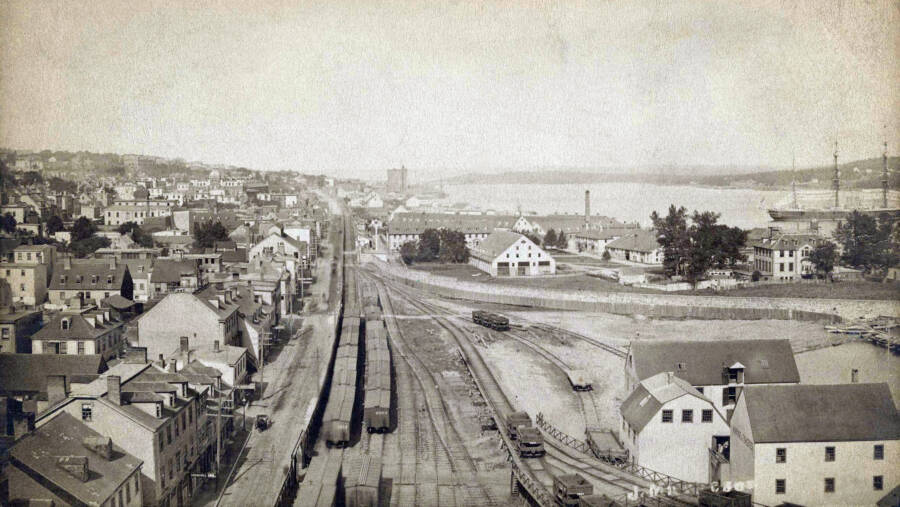
Public DomainHalifax, Nova Scotia, in 1900. This area would later be entirely decimated by the explosion.
At the time of the Halifax Explosion, Halifax, Nova Scotia was a bustling port city. It had grown substantially during World War I, with tens of thousands of troops passing through on their way to Europe.
Jobs were plentiful, and as more people arrived in search of work, dockyards, railyards, and factories were more than happy to expand their workforce. The war may have been devastating the European continent, but across the sea in Halifax, it was proving to be a major boon for the local economy. That said, there was an undercurrent of fear that German forces could arrive on the shore, and Halifax harbor was heavily fortified.
With guards keeping careful watch, countless transatlantic naval convoys passed through Halifax on their way to and from Europe, many loaded with weapons or items to aid in European relief efforts.
Unfortunately, the booming population in Halifax and its busy harbor traffic meant that the Halifax Explosion of 1917 was especially devastating.
The Collision That Ignited The Halifax Explosion
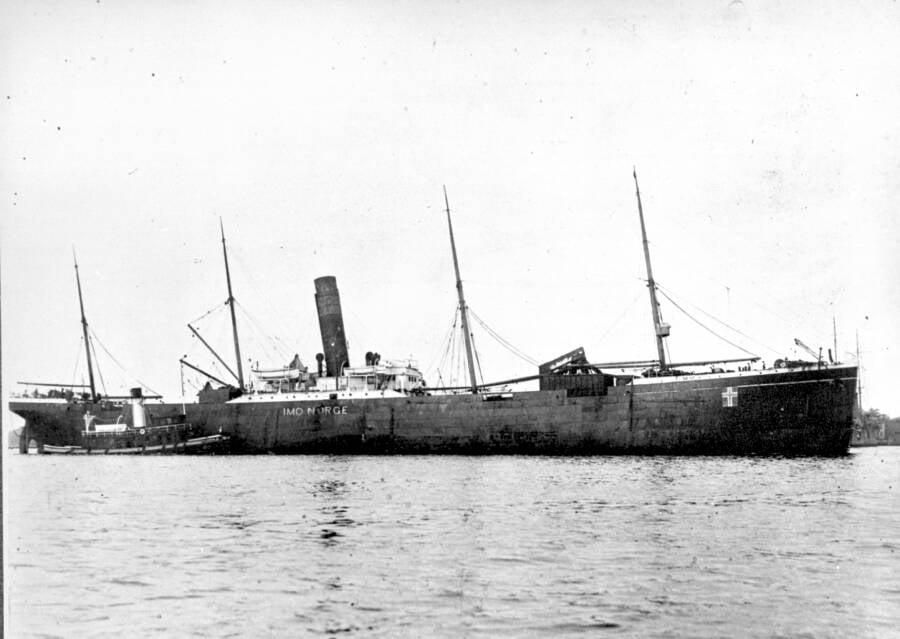
Public DomainThe SS Imo, one of the two ships involved in the Halifax Explosion.
The Norwegian ship SS Imo had arrived in Halifax on Dec. 3, 1917, to prepare for a trip to New York, where it would stock up on relief supplies for Belgium. On the ship's side were the words "BELGIAN RELIEF," in block letters.
Two days later, on Dec. 5, 1917, the French munitions ship SS Mont-Blanc arrived. The Mont-Blanc was filled to the brim with benzol, highly explosive picric acid, TNT, and gun cotton. Before the war, such a ship would never have been allowed into the inner area of the harbor, but the increase in harbor traffic meant that port authorities had relaxed this rule. That said, the Mont-Blanc was not able to sail into the harbor that night, as it had arrived so late that Halifax's defensive submarine nets had already been deployed.
Thus, on the morning of Dec. 6, 1917, the Imo prepared to depart the harbor and the Mont-Blanc prepared to enter it. Both ships had to navigate The Narrows — the narrowest part of the harbor — but a problem soon emerged. Other inbound ships had nudged the Imo toward the east side of The Narrows; outbound ships were meant to travel along the western edge.
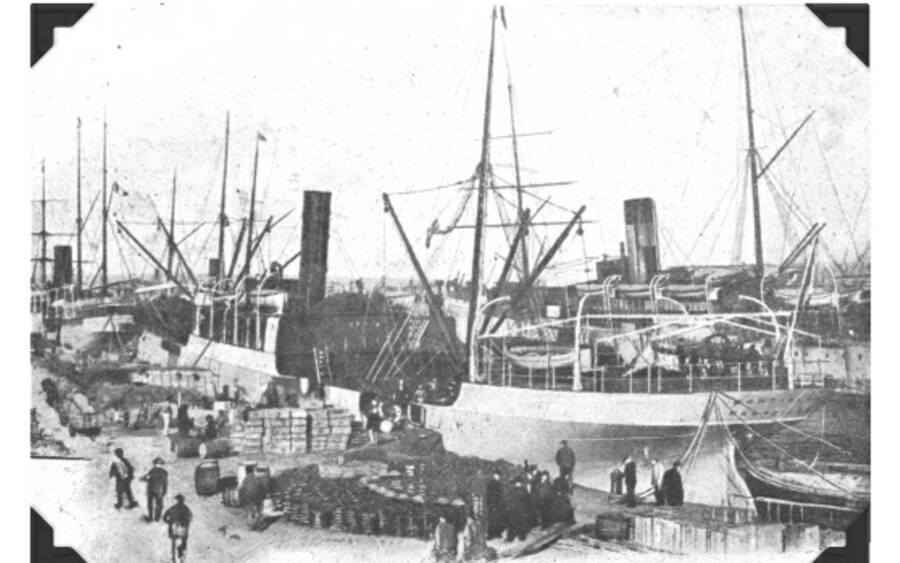
Public DomainThe SS Mont-Blanc, as seen roughly 15 years before the Halifax Explosion.
The SS Imo was now directly in the SS Mont-Blanc's path.
Both ships attempted to executive evasive maneuvers, but their efforts were ultimately in vain. The Imo struck the side of the Mont-Blanc, tearing it open and causing sparks to ignite the picric acid onboard.
It was the spark that led to the Halifax Explosion.
The Deadly Toll Of The Halifax Explosion
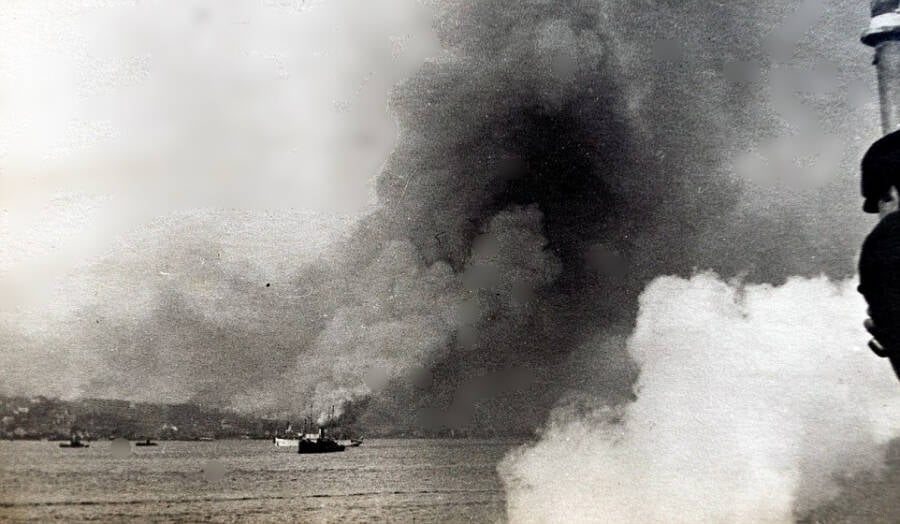
Ross Dunn/Wikimedia CommonsThe SS Mont-Blanc burned for 20 minutes before it exploded.
For 20 minutes, the Mont-Blanc burned in the Halifax harbor. Its crew, keenly aware of what they had been transporting, scrambled to the ship's lifeboats and rowed as quickly as they could to the Dartmouth shore.
Meanwhile, the sight of a burning ship drew attention from the mainland. People paused on their way to work and school to watch the blaze, and pressed close to their windows to get a look. As the smoking unmanned ship drifted toward Halifax, some recognized the imminent danger.
Railyard dispatcher Vincent Coleman was mid-conversation with yard manager William Lovett when a sailor warned them that an explosion was imminent. Coleman nearly fled, but at the last moment turned and issued a telegraph message to an incoming train to stay back.
"Guess this will be my last message," Coleman said, according to the Maritime Museum of the Atlantic. "Goodbye boys."
The Mont-Blanc erupted in an instant, sending debris and large chunks of the ship flying out over the harbor. The Imo was tossed onto the Dartmouth shoreline as if it were nothing more than a scrap of paper. The burst sent people, buildings, and trees soaring in much the same manner.
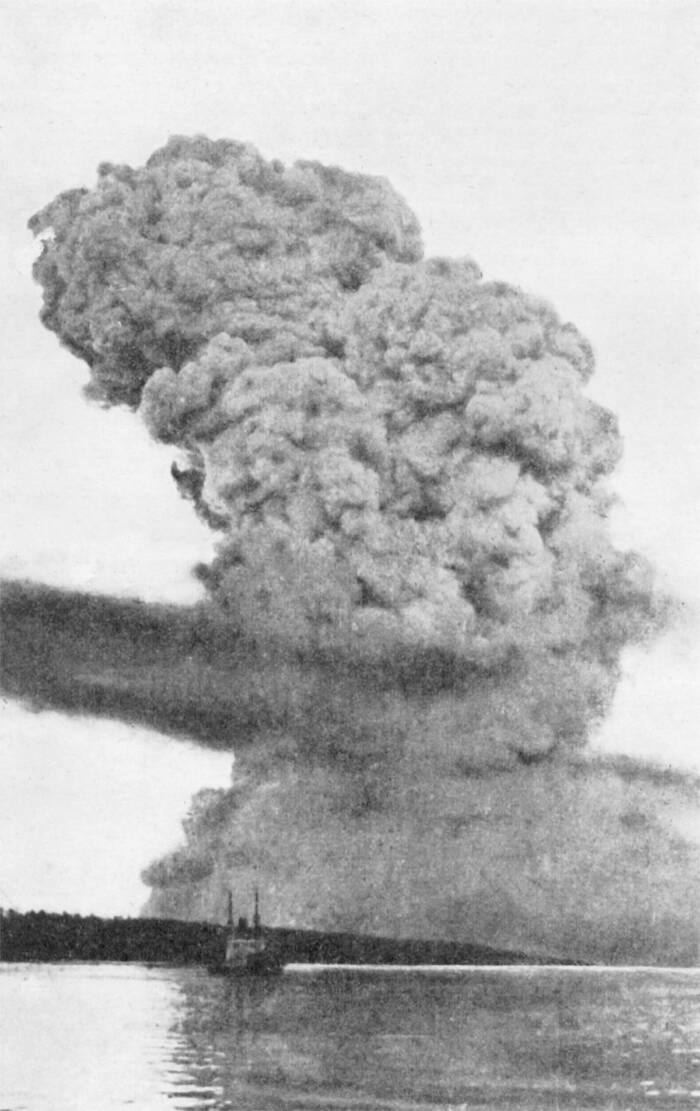
Public DomainA photograph of the Mont-Blanc purportedly taken 15 to 20 seconds after the explosion.
"I glanced out the window and saw a huge ball of fire in the sky," Harold J. Connolly, who was a child at the time, recounted in the Nova Scotia Archives. "I yelled 'Look at the fire!' As the heads turned there came a terrific blast that rocked and damaged the building. The glass was smashed in every window. Our teacher had the unique habit of having his desk face the window. Flying glass cost him the eye that was not turned away from the window."
The explosion decimated the north ends of Halifax and Dartmouth. Houses were leveled in mere moments, the railyards were destroyed, and even the sturdiest stone buildings were reduced to rubble. It was as if in one, terrible moment, the apocalypse had arrived on the shores of Halifax.
The Aftermath And Relief Effort

W.G. MacLaughlan/Nova Scotia ArchivesChildren in a building damaged, but not fully destroyed, by the explosion.
It had all happened so quickly. The Halifax Explosion, and the tsunami that followed, claimed 1,600 lives in an instant, including hundreds of children. Another 9,000 people were injured, many of whom died in the following days as a result, and hundreds of people were blinded by flying glass. Later estimates cited the total number of dead as high as 1,946.
Halifax was plunged into chaos. Hospitals were overwhelmed, and a blizzard the following day compounded the misery, hindering rescue efforts and causing even more to die. Despite the nightmarish circumstances, though, relief efforts commenced swiftly. Neighboring communities and international partners quickly worked to provide critical assistance, including dispatching medical personnel, supplies, and funds.
Soon afterward, a judicial inquiry determined that the blame should be placed solely on the Mont-Blanc's captain, pilot, and a naval officer overseeing harbor defenses. However, subsequent appeals concluded that both the Mont-Blanc and the Imo were equally at fault due to navigational errors. No criminal convictions resulted from the incident.
But the legacy of the Halifax Explosion remains strong in Nova Scotia. Plaques and markers across the city commemorate the disaster, and on December 6 every year, people flock to a memorial in Fort Needham Park. They listen to the memorial's bells and gather together to mark the tragedy, one of the darkest days in Halifax's history.
To learn more about the Halifax Explosion — and to see the utter devastation it brought to the city — look through the gallery above.
After this look at the Halifax Explosion, find out about the devastation of the Mt. Pelée volcanic disaster and the most devastating disasters of the 21st century.
